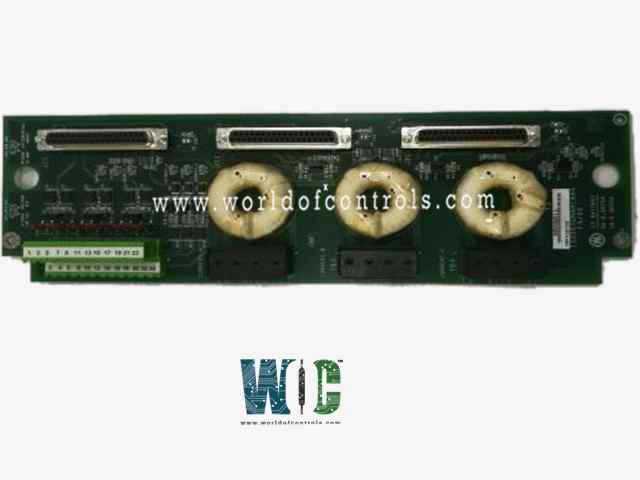
World Of Controls understands the criticality of your requirement and works towards reducing the lead time as much as possible.
IS200TGNAH1AAA - Turbine-Generator Terminal Board is available in stock which ships the same day.
IS200TGNAH1AAA - Turbine-Generator Terminal Board comes in UNUSED as well as REBUILT condition.
To avail our best deals for IS200TGNAH1AAA - Turbine-Generator Terminal Board, contact us and we will get back to you within 24 hours.
Part Number: IS200TGNAH1AAA
Manufacturer: General Electric
Country of Manufacture: United States (USA)
Number of channels: 24
Size: 33.02 cm high x 10.16 cm wide
Temperature Operating: -30 to 65 o C
Series: Mark VIe
Function: Turbine-Generator Terminal Board
IS200TGNAH1AAA is a turbine-generator terminal board developed by GE. It is part of the GE Speedtronic Mark VIe gas turbine control system.The Turbine-Generator terminal board (TGNA) serves as a crucial signal interface board specifically designed for the Mark VIe I/O pack PGEN. It facilitates seamless communication and integration between the control system and various sensors, enabling precise monitoring and control of turbine steam pressure and generator current.
WOC has the largest stock of Speedtronic Mark VIe Spares and we can repair your faulty spares with a warranty. WORLD OF CONTROLS can also supply unused and rebuilt components backed by a warranty. Our team of experts is available round the clock to support your urgent needs related to critical spares, contact us.
What is IS200TGNAH1AAA?
It is a turbine-generator terminal board and is part of the GE Speedtronic Mark VIe gas turbine control system.
How does the board ensure sensor accuracy?
The board provides out-of-sensor limits checks for each Turbine-Generator input, allowing the I/O processor to create a diagnostic alarm (fault) if any input registers an out-of-range voltage or current. This proactive monitoring ensures sensor accuracy and system reliability.
What is the purpose of the ID device on each cable connector?
Each cable connector on the terminal board features its own ID device, which is a read-only chip containing essential information such as the terminal board serial number, board type, revision number, and the JR, JS, JT connector location. This information is interrogated by the I/O board, and if a mismatch is detected, a hardware incompatibility fault is generated. This mechanism ensures compatibility and prevents potential issues arising from incorrect connections.
How does the board handle hardware compatibility issues?
In the event of a hardware incompatibility, such as a mismatch between the information read from the ID device and the expected configuration, the system generates a fault to alert operators. This proactive approach allows for timely intervention to resolve compatibility issues and maintain system integrity.
Why is sensor accuracy important in turbine-generator systems?
Sensor accuracy is crucial for turbine-generator systems as it directly impacts system performance, efficiency, and safety. Accurate sensor readings ensure that the system operates within safe operating limits and allows for timely detection and mitigation of potential issues, preventing costly downtime and equipment damage.
How does the board contribute to system reliability?
By providing out-of-sensor limits checks and ensuring hardware compatibility through the ID device mechanism, the board enhances system reliability by detecting and addressing potential issues before they escalate. This proactive approach minimizes the risk of system failures, ensuring uninterrupted operation and maximizing uptime.